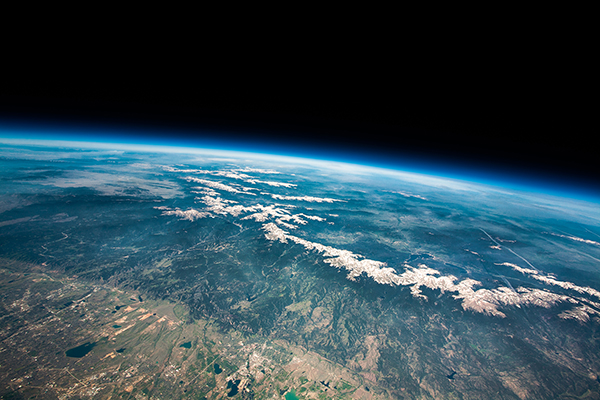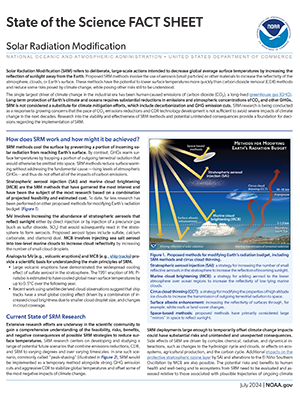A .gov website belongs to an official government organization in the United States.
A lock () or https:// means you've safely connected to the .gov website. Share sensitive information only on official, secure websites.

A natural balance exists in the Earth system between incoming solar radiation and outgoing radiation that is emitted back to space as either light (direct reflection of sunlight) or heat (infrared emission from surfaces). This balance, referred to as Earth's radiation budget (ERB), determines the climate of the Earth and makes our planet hospitable for life.
Perturbations to the ERB, such as those that change the amount of sunlight reaching the surface or the amount of heat trapped in the atmosphere, will shift the radiation balance and either cool or warm the Earth. Increases in greenhouse gases (e.g, CO2 and methane) have changed the composition of the atmosphere and disrupted the planet's energy budget by trapping heat that would have previously escaped back into space. There is a growing concern among some scientists and policymakers that climate change mitigation – controlling and reducing emissions of these pollutants and recovering carbon from the atmosphere – may not occur quickly enough to forestall serious impacts on ecosystems and society.
Long-term protection of Earth's climate and the oceans requires substantial reductions in the atmospheric emissions and concentrations of CO2 and other greenhouse gases. In order to "buy time" to effect these reductions, some have advocated for implementing approaches to temporarily cool the Earth's surface that involve increasing the reflectivity of stratospheric aerosol (small particles), or of low-level marine clouds that form over certain ocean regions. These approaches, designed to reflect a fraction of incoming sunlight back into space in order to shade the planet, are 'climate intervention' strategies and also known by other names such as albedo modification, solar radiation modification, or solar geoengineering.

The deployment of climate intervention strategies large enough to offset climate change impacts could have risks and unintended consequences. Many of the processes most important for understanding climate intervention approaches – such as those that control the formation of clouds and aerosols – are among the most uncertain components of the climate system to model and understand. Advancing our understanding requires expanded atmospheric observations and modeling, and innovation in our observation and modeling capabilities.
Since 2020, Congress has included specific language in the annual NOAA budget to advance our understanding of atmospheric processes related to climate intervention. The funds are supporting a series of research projects by NOAA and collaborating scientific partners that address key knowledge gaps by: